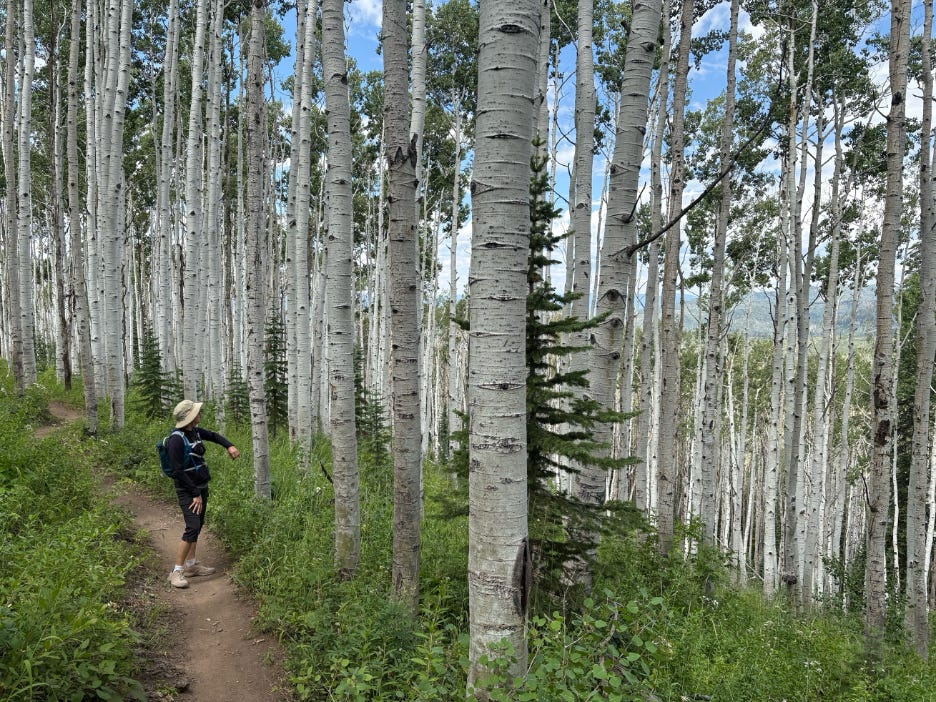Aspens and the Army: Rooted in Shared Strength
“True leadership begins the moment we stop pretending we have to do it all alone.” Mike Milano, Large and In Charge No More—A Journey to Vulnerable Leadership
While hiking outside of Steamboat Springs, Colorado recently with my wife, we found ourselves immersed in a thick stand of aspen trees—what some call a forest, but what we later learned is more accurately a grove. What struck me wasn’t just the beauty of the white bark, the density of the number of trees, or the leaves trembling in the alpine wind, but the knowledge that I was walking among what scientists consider a single organism. Aspens grow not as isolated trees, but as a living, breathing community connected underground by a vast root system. They thrive together, respond to threats collectively, and endure hardship by leaning—literally—on one another.
That quiet grove in the Rockies reminded me of another community I’ve been part of: the United States Army. Over my 33-year active-duty career, I served alongside men and women who, like the aspens, were bound not by proximity, but by shared values and a pledge of mutual support. In both the aspen grove and the Army, strength doesn’t reside in the individual alone, but in the collective system that binds and sustains each member, along with a commitment to a common purpose. When one part of the grove is threatened—by fire, disease, or windstorm—other parts respond. Likewise, when a soldier falters or suffers, his unit doesn’t retreat; it rallies.
But there’s something else at work here too: vulnerability. Aspens survive precisely because they are open and responsive. They send distress signals through their root network. They allocate resources to struggling parts of the colony. That openness is not a weakness—it’s a survival trait. In the later years of my military service, I came to understand how critical vulnerability is to effective leadership. Not the chest-pounding, I-alone-can-fix-it type of leadership, but the kind that builds trust, fosters resilience, and draws people closer when things are faltering, not going according to plan.
In both the Army and the aspen grove, there’s an understanding that no one stands alone for long—not if they want to survive. And to lean on each other, we must first admit that we need one another. That takes vulnerability. It’s easier to act tough, to isolate, to gut it out. But true strength comes from connection, from being open to one another’s pain and willing to respond with care rather than judgment.
As I stood among those aspen trees, I didn’t just see beauty. I saw a metaphor for the kind of community I hope we all strive to build—whether in uniform, in the workplace, in our communities, or in our personal lives. A place where strength grows through shared roots. A place where vulnerability is not feared but embraced. A place where when one of us falters, needs a helping hand, the whole grove stands a little taller.





Having previously lived in Colorado for close to six years and viewing aspen trees many times I learned something new!! And excellent using their biology to illustrate needed leadership and vulnerability!!